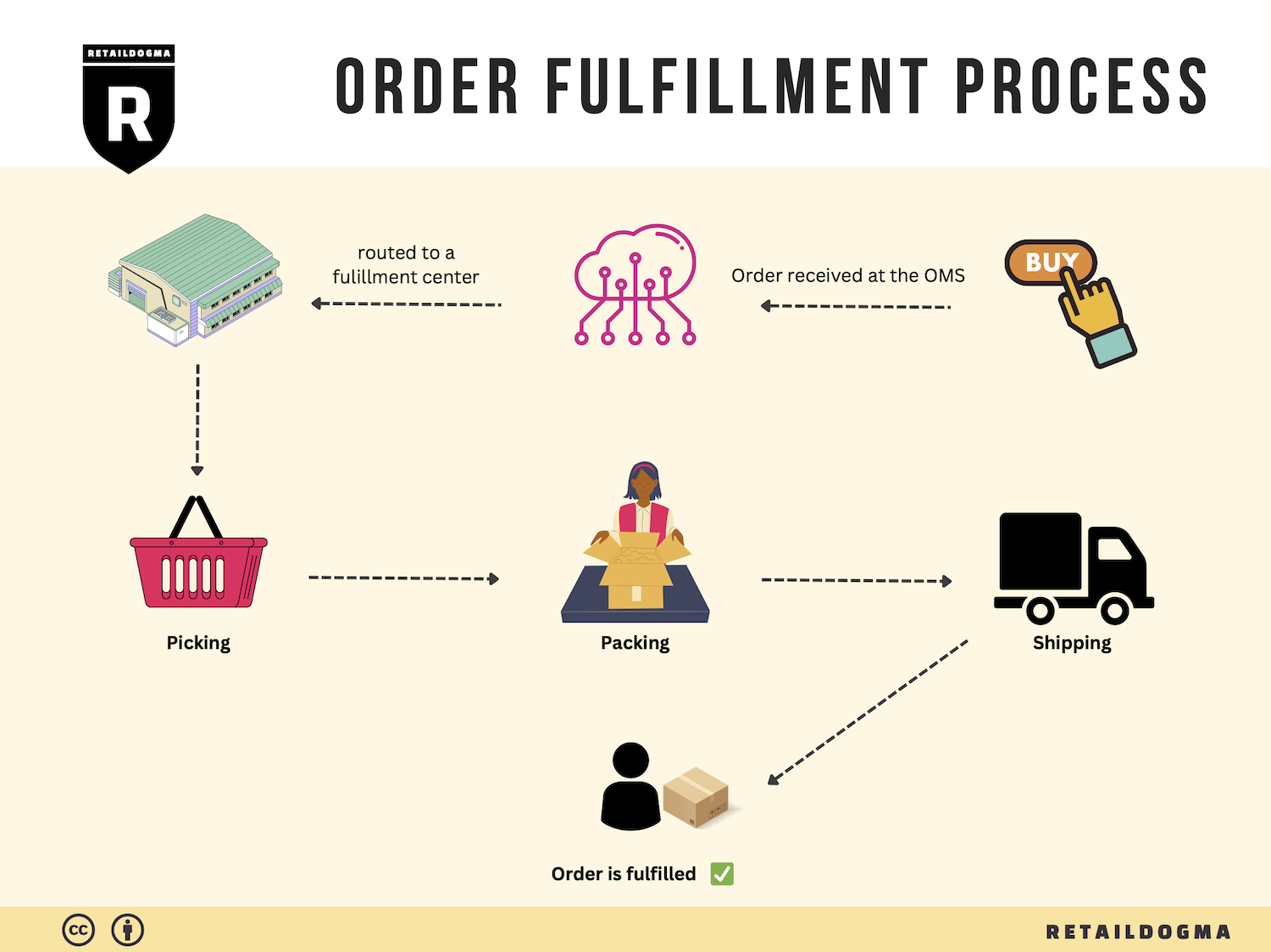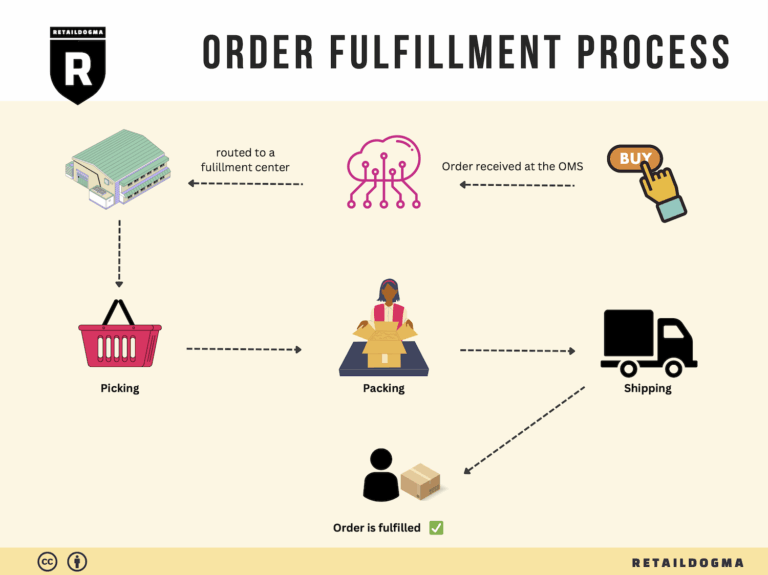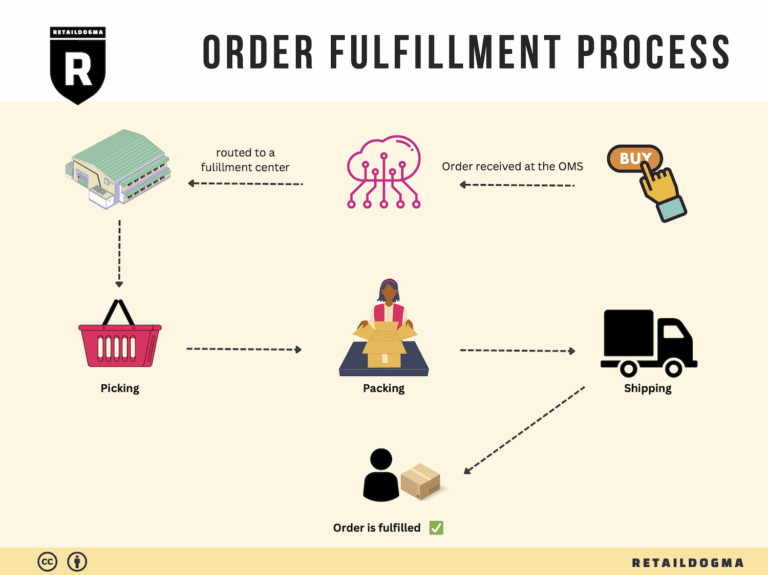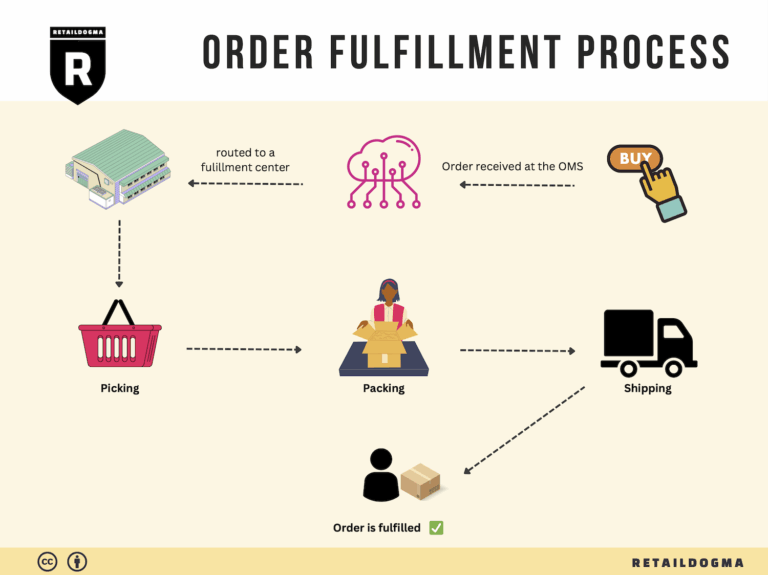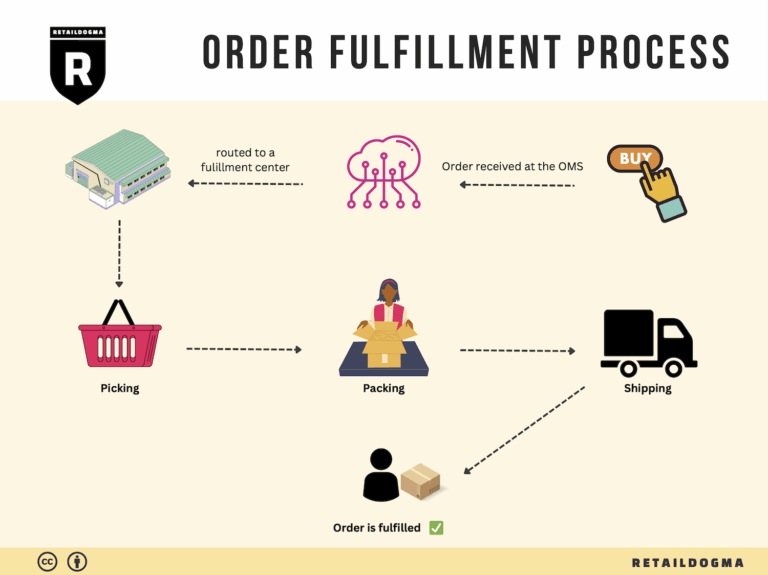What Is A Fulfillment Center? A Complete Guide (2025)
What is E-commerce Fulfillment? An Introduction for Growing Businesses
Understanding E-commerce Fulfillment: A Key to Your Business Success
As your online business grows, the excitement of increased sales can quickly become overshadowed by the challenges of packing and shipping orders. Many entrepreneurs find themselves overwhelmed by the logistics involved in getting products to customers efficiently and accurately. This is where e-commerce fulfillment comes into play—a critical component of your supply chain that can make or break your customer experience.
In simple terms, e-commerce fulfillment is the process of getting a product from your inventory to your customer’s doorstep. This involves several key steps: receiving orders, processing them, picking and packing items, and finally shipping them out. As your business scales, managing this process in-house can become cumbersome, leading many to consider outsourcing fulfillment to third-party logistics providers (3PLs) or utilizing services like Fulfillment by Amazon (FBA).
In this guide, we will delve into the various fulfillment models available to growing businesses. You will learn about the differences between 3PL and FBA, and how each can suit your unique needs. Additionally, we will explore the core services that these fulfillment partners offer, including inventory management, order processing, returns handling, and shipping solutions.
Choosing the right fulfillment partner is crucial to your business’s success. We will provide practical advice on what to look for in a fulfillment service, including technology capabilities, shipping speed, cost efficiency, and customer service. Understanding pricing structures will also be an important part of our discussion, as this can significantly impact your bottom line.
The ultimate goal of this guide is to empower you—business owners, operations managers, and entrepreneurs—to make informed decisions about your logistics strategy. By understanding the ins and outs of e-commerce fulfillment, you can enhance your operational efficiency, improve customer satisfaction, and ultimately drive growth for your business. Let’s embark on this journey to streamline your fulfillment process and set your brand up for success in the competitive e-commerce landscape.
What You’ll Learn In This Guide
- What is E-commerce Fulfillment? An Introduction for Growing Businesses
- The Order Fulfillment Process: From ‘Buy’ Button to Customer’s Door
- Comparing Fulfillment Models: In-House vs. 3PL vs. Dropshipping
- A Deep Dive into Amazon FBA: Pros, Cons, and Who It’s For
- Core Services Offered by Fulfillment Centers
- How to Choose a Fulfillment Partner: A 6-Point Checklist
- Understanding Fulfillment Pricing: A Breakdown of Common Fees
- Frequently Asked Questions (FAQs) about Fulfillment
- Conclusion: Is Outsourcing Fulfillment the Right Move for Your Business?
- Important Disclaimer
The Order Fulfillment Process: From ‘Buy’ Button to Customer’s Door
1. Receiving Inventory
The order fulfillment process begins with receiving inventory, a critical step that lays the foundation for efficient operations. When products arrive at the fulfillment center, they are checked against purchase orders to ensure accuracy. This step often involves the use of Stock Keeping Units (SKUs), which are unique identifiers assigned to each product. This ensures that every item is accounted for and that discrepancies are quickly identified.
Proper receiving procedures are essential because they help to prevent stockouts and overstock situations, which can adversely affect customer satisfaction and operational efficiency. By implementing robust inventory management systems, businesses can maintain real-time visibility into stock levels, reducing the risk of errors. Accurate receiving also enhances the integrity of the inventory data, which is crucial for demand forecasting and future ordering decisions.
2. Warehouse Storage
Once the inventory is received and verified, it is strategically stored within the warehouse. Effective warehouse storage involves organizing products in a manner that optimizes retrieval efficiency. This often utilizes a method known as ABC analysis, which categorizes items based on their sales volume and profitability. High-demand items are placed closer to the packing area, while slower-moving inventory can be stored further away.
The importance of efficient storage cannot be overstated. A well-organized warehouse minimizes the time spent searching for products and reduces labor costs. Furthermore, utilizing technology such as warehouse management systems (WMS) can enhance tracking capabilities, allowing for better control over stock levels and more accurate inventory reporting. This strategic approach to storage is vital for scaling operations and meeting customer expectations for timely delivery.
3. Order Picking
The next step in the fulfillment process is order picking, where items are selected from the warehouse based on incoming orders. This process is often guided by pick lists, which detail the specific products and quantities needed for each order. Advanced picking methods, such as batch picking or zone picking, can be employed to increase efficiency, especially in environments with high order volumes.
Order picking is crucial because it directly impacts the speed and accuracy of order fulfillment. Errors during this stage can lead to incorrect shipments, resulting in customer dissatisfaction and increased returns. To enhance accuracy, many companies incorporate technologies such as voice picking or pick-to-light systems, which guide workers to the correct items using audio prompts or visual indicators. Ensuring precision in picking is essential for maintaining a high level of order accuracy, which is a key performance indicator in e-commerce fulfillment.
4. Order Packing
After items are picked, they move to the packing stage, where they are prepared for shipment. This involves not only placing products in appropriate packaging but also ensuring that they are protected during transit. Key considerations in packing include the use of right-sized cartons, which can reduce shipping costs and waste. Technologies such as cartonization software can automatically determine the optimal box size for each order, enhancing both efficiency and sustainability.
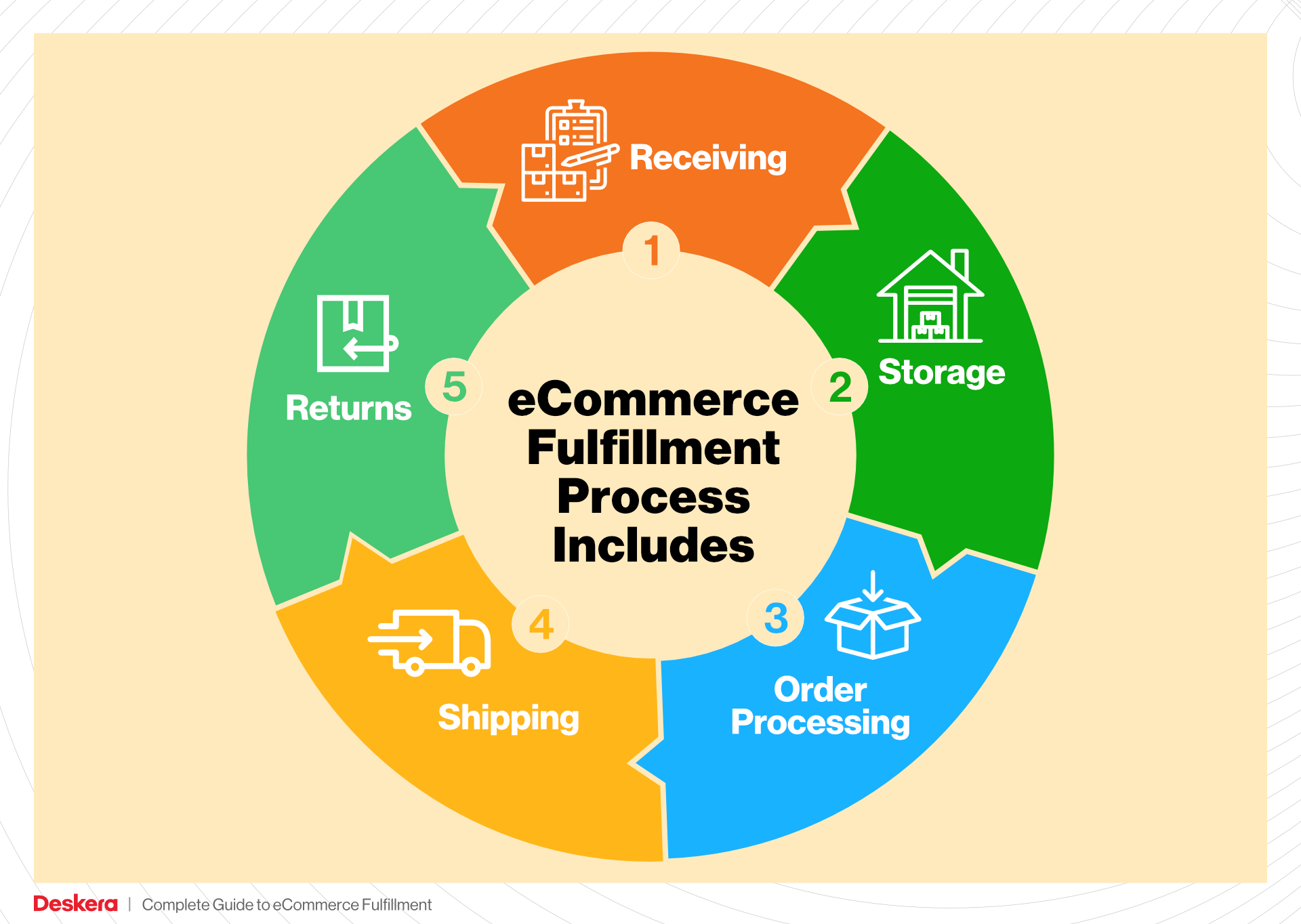
Packing is an important step because it influences the overall customer experience. Well-packed orders are less likely to be damaged during shipping, reducing the likelihood of returns and enhancing customer satisfaction. Additionally, incorporating branding elements into the packing process, such as custom packing slips or promotional materials, can enhance the unboxing experience and foster brand loyalty. Effective packing processes also streamline the workflow, allowing for faster processing times and improved overall efficiency.
5. Shipping & Delivery
The final step in the order fulfillment process is shipping and delivery, where packages are dispatched to customers. This phase involves selecting the optimal carrier based on real-time rate shopping, which considers factors such as cost, speed, and reliability. The use of tracking systems allows both the business and the customer to monitor the shipment’s progress, enhancing transparency and trust.
Shipping and delivery are critical components of the fulfillment process as they directly affect customer satisfaction. Fast and reliable delivery options can significantly enhance a brand’s reputation and encourage repeat business. Companies that can offer 1-2 day shipping to a large percentage of their customer base often see higher conversion rates and customer retention. Moreover, effective returns management processes are integral to this step, ensuring that customers have a hassle-free experience if they need to return items, thereby fostering long-term loyalty.
In conclusion, understanding and optimizing each step of the order fulfillment process is essential for e-commerce businesses looking to scale. By focusing on these five key areas—receiving inventory, warehouse storage, order picking, order packing, and shipping & delivery—businesses can enhance efficiency, reduce costs, and improve customer satisfaction, ultimately driving growth and success in the competitive e-commerce landscape.
Comparing Fulfillment Models: In-House vs. 3PL vs. Dropshipping
Fulfillment Models Comparison
| Model | Who Handles Inventory | Best For (Business Stage) | Key Advantage | Key Disadvantage |
|---|---|---|---|---|
| In-House Fulfillment | The business itself | Startups and established brands with stable sales | Full control over inventory and processes | High overhead costs and resource-intensive |
| Third-Party Logistics (3PL) | A third-party provider | Growing businesses scaling operations | Cost-effective and scalable solutions | Less control over fulfillment processes |
| Dropshipping | Supplier or manufacturer | New businesses or those testing new products | Low upfront investment and no inventory risk | Lower profit margins and reliance on suppliers |
In-House Fulfillment
In-house fulfillment refers to the process where a business manages its inventory, order processing, and shipping internally. This model is often adopted by startups or established brands that have consistent sales and wish to maintain complete control over their fulfillment process. One of the main advantages of in-house fulfillment is that it allows businesses to tailor their operations to meet specific customer needs, ensuring a unique brand experience. Companies can implement their quality control measures, choose their packaging, and directly manage the shipping process. However, this approach comes with significant overhead costs, such as warehousing, staffing, and technology investments. Additionally, as sales grow, scaling operations can become complex and resource-intensive, requiring substantial management oversight and operational adjustments.
Third-Party Logistics (3PL)
Third-party logistics (3PL) involves outsourcing fulfillment services to specialized companies that manage inventory, order processing, and shipping. This model is ideal for growing businesses that seek to scale operations without the burden of managing logistics themselves. 3PL providers, like a2b Fulfillment, offer expertise in e-commerce logistics, advanced technology integrations, and strategic shipping options. They often have multiple fulfillment centers across key regions, allowing for faster shipping times and reduced costs. The key advantages include cost-effectiveness and scalability, as businesses can easily adjust their logistics operations according to demand fluctuations. However, a potential downside is the reduced control over the fulfillment process, which can lead to discrepancies in service levels or issues with order accuracy if not managed properly.
Dropshipping
Dropshipping is a fulfillment model where a business sells products without holding inventory. Instead, when a customer places an order, the retailer purchases the item from a third-party supplier who then ships it directly to the customer. This model is particularly appealing for new entrepreneurs or those testing new product lines, as it requires minimal upfront investment and eliminates the risks associated with unsold inventory. The primary advantage of dropshipping is the low operational costs, allowing businesses to focus on marketing and sales rather than logistics. However, dropshipping often comes with lower profit margins, as the retailer must purchase items at wholesale prices while selling them at retail. Moreover, reliance on suppliers for inventory management and shipping can lead to delays or quality control issues, impacting customer satisfaction and brand reputation.
Conclusion
When selecting a fulfillment model, e-commerce business owners must consider their unique operational needs, growth stage, and customer expectations. In-house fulfillment offers complete control but at a higher cost and complexity, making it suitable for established brands. Conversely, 3PL provides an efficient, scalable solution for growing businesses, while dropshipping presents a low-risk entry point for new entrepreneurs. By carefully evaluating these options, businesses can align their fulfillment strategy with their overall growth objectives, ensuring a seamless customer experience while optimizing operational efficiency.
A Deep Dive into Amazon FBA: Pros, Cons, and Who It’s For
Understanding Fulfillment by Amazon (FBA)
Fulfillment by Amazon (FBA) is a service offered by Amazon that allows e-commerce sellers to store their products in Amazon’s fulfillment centers. Amazon takes care of storage, packaging, shipping, and customer service, allowing sellers to focus on growing their businesses. FBA provides sellers with access to Amazon’s extensive logistics network, which can significantly enhance their reach and operational efficiency.
How FBA Works
-
Account Setup: To start using FBA, sellers must create an Amazon seller account and enroll in the FBA program.
-
Inventory Preparation: Sellers prepare their products according to Amazon’s guidelines, which includes labeling and packaging requirements.
-
Shipping to Amazon: Once products are ready, sellers ship their inventory to Amazon’s fulfillment centers. They can choose to send all inventory to one center or distribute it across multiple locations based on Amazon’s recommendations.
-
Order Processing: When a customer places an order for an FBA product, Amazon takes over. The order is picked, packed, and shipped from the fulfillment center. Amazon also handles any customer inquiries and returns.
-
Customer Service: Amazon provides customer service for FBA orders, including returns and refunds, which can enhance the buyer’s experience.
-
Payment: After the sale, sellers receive payment from Amazon, minus the associated fees.
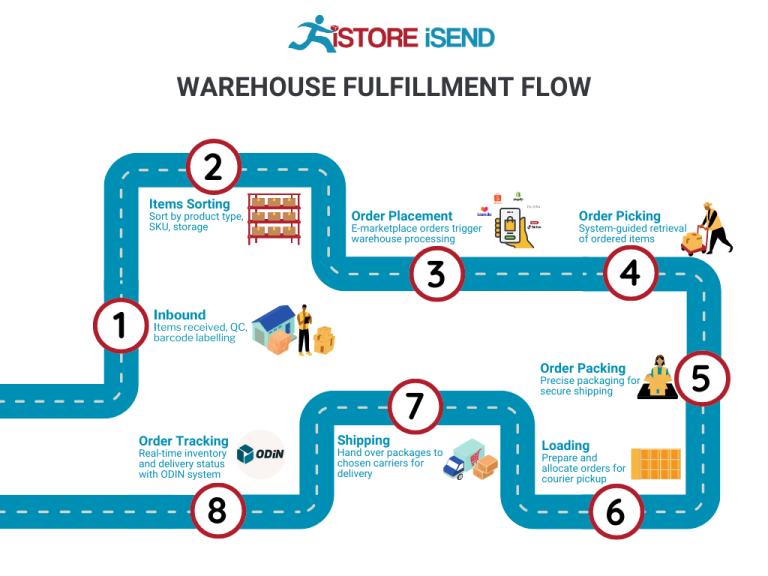
Pros of FBA
1. Prime Eligibility
One of the most significant advantages of FBA is that products become eligible for Amazon Prime, which can lead to increased sales. Prime members often prefer products that qualify for free two-day shipping, making FBA an attractive option for sellers looking to capture this customer segment.
2. Customer Trust
Products fulfilled by Amazon benefit from Amazon’s brand reputation. Customers are more likely to purchase items that are backed by Amazon’s fulfillment service due to the trust associated with Amazon’s customer service and return policies. This trust can lead to higher conversion rates and customer loyalty.
3. Multi-Channel Fulfillment
FBA isn’t limited to just Amazon sales. Sellers can also use FBA to fulfill orders from other sales channels, such as their own website or other marketplaces. This flexibility allows businesses to streamline their fulfillment processes and manage inventory more effectively across multiple platforms.
4. Streamlined Logistics
Outsourcing fulfillment to Amazon allows sellers to focus on other critical aspects of their business, such as product development and marketing. With Amazon handling storage, packing, shipping, and returns, sellers can save valuable time and resources.
5. Scalability
FBA offers a scalable solution for growing businesses. As sales increase, sellers can easily send more inventory to Amazon’s fulfillment centers without needing to invest in their own warehousing and logistics infrastructure.
Cons of FBA
1. High Fees
While FBA provides significant benefits, the associated costs can be steep. Sellers pay various fees, including storage fees, fulfillment fees, and long-term storage fees for items that remain unsold for over six months. These fees can eat into profit margins, especially for low-cost items.
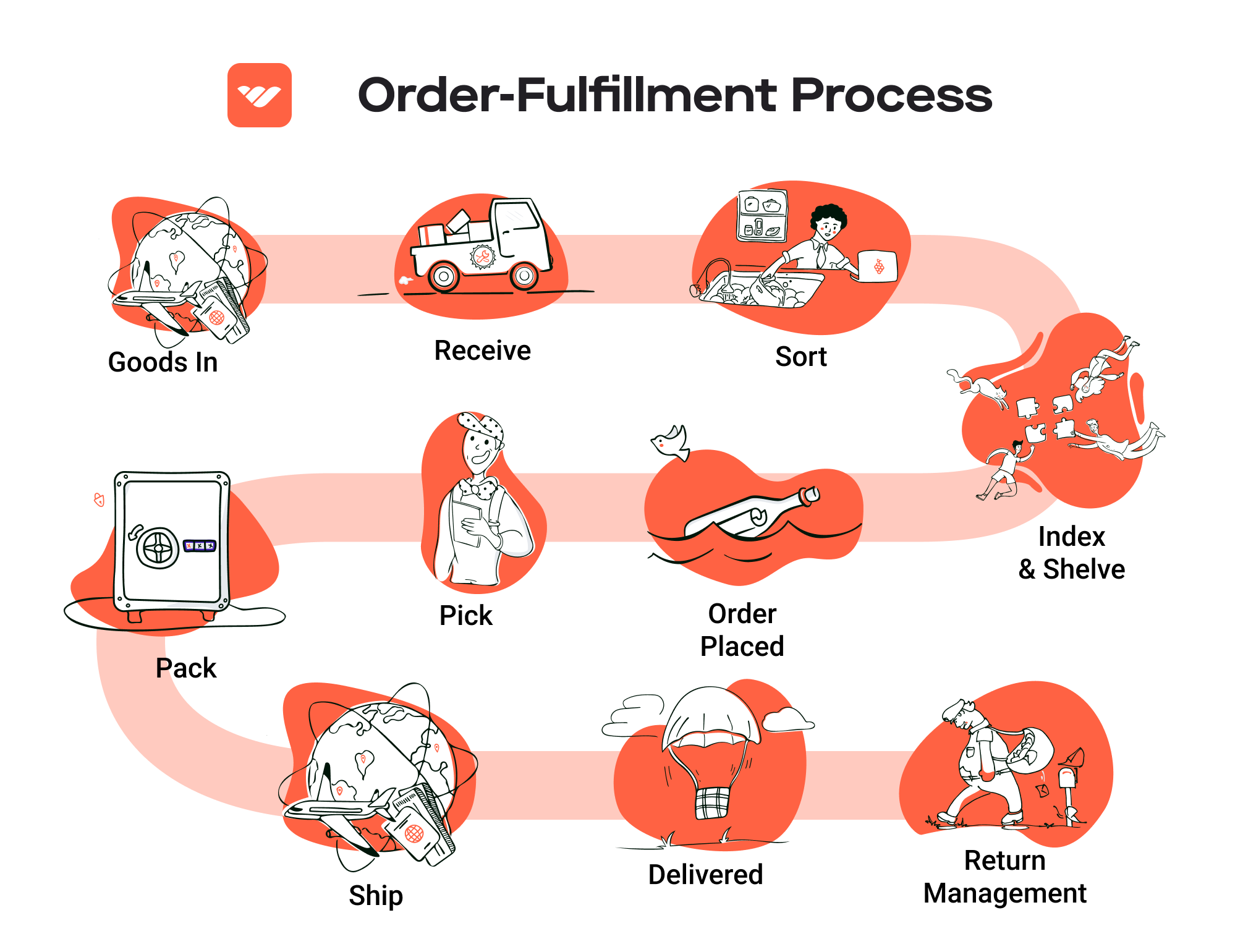
2. Strict Inventory Rules
Amazon has strict inventory management policies, which can be challenging for sellers to navigate. Sellers must adhere to specific guidelines regarding labeling, packaging, and shipping. Non-compliance can result in additional fees or inventory being returned or disposed of.
3. Commingling Risks
FBA operates on a commingling model, meaning that sellers’ inventory is stored alongside that of other sellers. This can lead to risks where customers receive items that are not from the seller they intended to buy from. While Amazon offers a solution for this through the “Stickered Inventory” option, it may not be suitable for all sellers, especially those concerned about brand integrity.
4. Limited Control Over Fulfillment
Sellers relinquish a degree of control over the fulfillment process. This can be a disadvantage for brands that want to maintain a specific customer experience, including packaging and shipping methods.
5. Inventory Management Challenges
Managing inventory levels can be challenging with FBA, especially if a seller is also selling through other channels. Sellers must ensure they maintain adequate stock levels in Amazon’s warehouses, which can require careful planning and forecasting.
Who is FBA Best For?
Fulfillment by Amazon is best suited for e-commerce businesses that:
- Have High Sales Volume: Sellers with a high turnover of products can benefit from FBA’s logistics efficiency and customer reach.
- Sell Consumer Goods: Products that are popular and in demand are ideal for FBA, especially if they can attract Prime members.
- Value Convenience: Sellers looking to streamline their operations and reduce the burden of logistics management will find FBA appealing.
- Are New to E-commerce: New sellers can leverage Amazon’s established platform and fulfillment capabilities to gain traction without investing heavily in logistics infrastructure.
- Want to Expand Reach: Brands seeking to increase their visibility and credibility in the marketplace can benefit from the trust and exposure that comes with FBA.
In conclusion, while Fulfillment by Amazon offers numerous advantages, including increased sales potential and reduced operational burdens, it also comes with challenges that sellers must carefully consider. A clear understanding of the pros and cons of FBA will enable e-commerce business owners to make informed decisions that align with their operational goals and customer service standards.
Core Services Offered by Fulfillment Centers
Inventory Management & Warehousing
Inventory management and warehousing are foundational services provided by fulfillment centers. This entails the systematic handling of inventory from the moment it arrives at the warehouse until it is shipped out to customers. Fulfillment centers typically offer purpose-built facilities equipped with advanced technology that enables efficient storage, tracking, and retrieval of products.
Benefits:
1. Real-time Inventory Tracking: With automated inventory management systems, e-commerce businesses can enjoy real-time visibility into their stock levels. This reduces the risk of stockouts or overstock situations, allowing for better demand forecasting and planning.
-
Optimized Storage Solutions: Fulfillment centers employ strategic layouts and storage solutions that maximize space efficiency. This not only reduces warehousing costs but also expedites the picking process when orders are placed.
-
Scalability: As e-commerce businesses grow, their inventory needs can fluctuate significantly. Fulfillment centers provide the scalability needed to adjust storage space and inventory levels without the hassle of managing additional warehouse logistics.
Pick and Pack Services
Pick and pack services refer to the process of selecting items from the warehouse and preparing them for shipment. This involves picking the correct products based on customer orders, packing them securely, and labeling them for delivery. Fulfillment centers often utilize advanced technology, including robotics and automated systems, to enhance the speed and accuracy of this process.
Benefits:
1. Speed and Efficiency: With the adoption of automated picking solutions, fulfillment centers can significantly reduce the time it takes to pick and pack orders. This is crucial for meeting customer expectations in today’s fast-paced e-commerce environment where delivery speed is a competitive advantage.
-
Accuracy: High accuracy rates in order fulfillment are essential to maintaining customer satisfaction. Fulfillment centers implement rigorous quality control checks throughout the picking and packing process, ensuring that the right products are shipped to the right customers.
-
Cost-Effectiveness: Efficient pick and pack operations minimize labor costs and reduce the risk of costly errors. By utilizing optimized packing techniques and materials, fulfillment centers can also lower shipping costs, which is a direct benefit to e-commerce businesses.
Kitting and Assembly
Kitting and assembly services involve the grouping of multiple products into a single package or kit, often customized for specific customer needs or promotions. This can include assembling products that require some level of configuration or bundling items together for a special offer.
Benefits:
1. Enhanced Customer Experience: Offering kitted products can improve the shopping experience by providing convenience and value to customers. Bundled products often appeal to buyers looking for comprehensive solutions, which can lead to increased sales.
-
Promotional Opportunities: Kitting can be an effective strategy for marketing campaigns. It allows businesses to create unique product offerings that can attract new customers or encourage repeat purchases.
-
Streamlined Operations: By outsourcing kitting and assembly to a fulfillment center, e-commerce businesses can focus on their core competencies while benefiting from the fulfillment center’s expertise and efficiency in assembling and packaging products.
Returns Management (Reverse Logistics)
Returns management, also known as reverse logistics, is the process of handling returned products efficiently and effectively. Fulfillment centers provide comprehensive returns management services, which include inspecting returned items, restocking inventory, and managing the logistics of return shipping.
Benefits:
1. Customer Satisfaction: A smooth returns process is critical to maintaining customer trust and satisfaction. Fulfillment centers streamline returns by offering easy return shipping solutions and timely processing of returned items, which can enhance the overall customer experience.
-
Cost Management: Efficient returns management can help e-commerce businesses minimize losses associated with returns. Fulfillment centers often have systems in place to quickly assess the condition of returned items, allowing for rapid restocking or refurbishment as needed.
-
Data Insights: Returns management also provides valuable insights into customer behavior and product performance. By analyzing return data, e-commerce businesses can identify trends, understand reasons for returns, and make informed decisions to improve product offerings and reduce return rates.
In summary, partnering with a fulfillment center can significantly enhance an e-commerce business’s operational efficiency and customer satisfaction. By leveraging services like inventory management, pick and pack, kitting, and returns management, businesses can scale effectively while maintaining a focus on growth and customer experience.
How to Choose a Fulfillment Partner: A 6-Point Checklist
Location & Warehouse Network
Choosing a fulfillment partner with strategically located warehouses is crucial for reducing shipping times and costs. A well-positioned network can significantly impact delivery speed, customer satisfaction, and your overall brand reputation.
Why It’s Important:
– Shipping Speed: The closer your fulfillment center is to your customers, the faster you can deliver orders.
– Cost Efficiency: Proximity can reduce shipping costs, which is vital for maintaining profitability.
Questions to Ask:
1. Where are your fulfillment centers located, and how do these locations align with my customer demographics?
2. How do you ensure that your warehouses are strategically placed to maximize shipping efficiency?
3. What is your average shipping time to major regions in the U.S.?
Technology & Integrations
In today’s e-commerce landscape, technology is a key driver of efficiency and accuracy in order fulfillment. A robust technology stack allows for seamless integration with your existing systems.
Why It’s Important:
– Real-Time Inventory Management: Automated systems help maintain accurate inventory levels, reducing the risk of stockouts or overstocking.
– Streamlined Operations: Technology can speed up order processing, picking, packing, and shipping.
Questions to Ask:
1. What order management systems do you support, and how do they integrate with major e-commerce platforms?
2. Can you provide examples of how your technology has improved fulfillment accuracy and speed?
3. What kind of reporting and analytics capabilities do you offer for tracking performance and inventory?
Specializations (e.g., Cold Storage, Oversized Items)
Different businesses have unique fulfillment needs based on their product types. Ensure that your potential partner can handle any special requirements your inventory may have.
Why It’s Important:
– Product Compatibility: Not all fulfillment centers are equipped to handle specific types of products, such as perishables or oversized items.
– Operational Efficiency: Specialization can lead to more efficient handling, storage, and shipping.
Questions to Ask:
1. Do you have specialized facilities for handling cold storage or oversized items?
2. What experience do you have in fulfilling orders for my specific product type?
3. How do you manage the unique challenges associated with these specializations?
Scalability & Capacity
Your fulfillment partner should be able to grow alongside your business. As your order volume increases, your fulfillment operations should scale accordingly without compromising service quality.
Why It’s Important:
– Future-Proofing: A partner that can accommodate growth will save you the headache of switching providers as your business expands.
– Operational Flexibility: The ability to scale quickly can be a competitive advantage during peak seasons.
Questions to Ask:
1. How do you handle increases in order volume during peak seasons?
2. What is your current capacity, and how do you plan to expand it in the future?
3. Can you provide case studies or examples of how you’ve successfully scaled for other clients?
Pricing and Contracts
Understanding the cost structure and terms of service is essential for budgeting and financial planning. Transparent pricing will help you avoid unexpected charges down the line.
Why It’s Important:
– Cost Management: Knowing all potential costs upfront can help you set accurate pricing for your products.
– Contract Flexibility: Terms that allow for adjustments based on changing business needs can be beneficial.
Questions to Ask:
1. What is your pricing model, and what factors influence your costs?
2. Are there any hidden fees or additional charges I should be aware of?
3. What are the terms of the contract, and how flexible are they if my needs change?
Customer Support & Reviews
A reliable fulfillment partner should offer excellent customer support to resolve issues quickly and efficiently. Additionally, customer reviews can provide valuable insight into the partner’s reliability and service quality.
Why It’s Important:
– Issue Resolution: Quick and effective customer support can minimize disruptions in your supply chain.
– Reputation Management: Positive customer reviews can indicate a partner’s reliability and ability to meet expectations.
Questions to Ask:
1. What customer support options do you offer (e.g., phone, email, chat)?
2. How do you handle issues that arise during the fulfillment process?
3. Can you provide references or case studies from current or past clients?
By carefully evaluating potential fulfillment partners against this checklist, you can make a more informed decision that aligns with your e-commerce business goals. A well-chosen partner can enhance your operational efficiency, improve customer satisfaction, and ultimately contribute to your business’s growth and success.
Understanding Fulfillment Pricing: A Breakdown of Common Fees
Initial Setup Fees
When partnering with a fulfillment service like a2b Fulfillment, the initial setup fees represent the costs associated with integrating your business into their system. This may include account creation, software integration, and the configuration of your inventory management system. Depending on the complexity of your operations, these fees can vary significantly.
Typically, these fees can be a flat rate or based on the number of products you have. For businesses with extensive SKU catalogs, setup fees may be higher due to the additional time and resources required to establish your account and ensure seamless integration with your existing e-commerce platforms. It’s essential to clarify what is included in these fees, as some providers might bundle additional services, such as training and ongoing support, which can be beneficial in the long run.
Receiving Fees
Receiving fees are charged for the process of accepting and processing your inventory when it arrives at the fulfillment center. This includes unloading goods, inspecting them for damage, and entering them into the inventory management system.
Receiving fees can be calculated on a per-pallet or per-box basis, depending on how your goods are shipped. For instance, if you send multiple pallets, you might incur a lower rate per pallet compared to shipping single boxes. Additionally, if your shipments require special handling or inspection, this can lead to increased receiving fees. Understanding the receiving process and associated costs will help you manage your inventory more effectively and avoid unexpected charges.
Storage Fees (per pallet/bin)
Storage fees are incurred for the space your inventory occupies within the fulfillment center. These fees are typically calculated on a per-pallet or per-bin basis, depending on how your products are stored.
The cost may vary based on factors such as the duration of storage and the type of products. For example, seasonal products that remain in storage longer may incur different fees compared to fast-moving items. It’s crucial to analyze your inventory turnover rates and adjust your storage needs accordingly. Some fulfillment centers may offer tiered pricing, where the rate decreases as you store more pallets, which could be advantageous for businesses with high inventory levels.
Pick & Pack Fees (per item/order)
Pick and pack fees are charged for the process of selecting products from inventory and preparing them for shipment. This fee can be structured in different ways: per item, per order, or a combination of both.
For instance, if you have a high number of SKUs or frequently ship orders with multiple items, this fee can add up quickly. Conversely, if you have a straightforward product offering with fewer items per order, your costs may be lower. It’s important to clarify how these fees are calculated with your fulfillment provider and consider strategies to minimize them, such as optimizing order sizes or consolidating shipments.
Shipping Fees
Shipping fees encompass the costs associated with transporting your products to customers. These fees are influenced by various factors, including the shipping method (ground, air, etc.), the destination, and the weight and dimensions of the packages.
Fulfillment centers typically negotiate shipping rates with carriers, allowing them to pass on savings to their clients. However, understanding how these fees are structured—whether they are flat rates, weight-based, or distance-based—can help you budget effectively. Additionally, the choice of carriers and shipping options can significantly impact your overall shipping costs. It’s wise to discuss these options with your fulfillment partner to find the best balance between cost and delivery speed.
Tips for Getting an Accurate Quote
-
Provide Detailed Information: When requesting quotes, offer as much detail as possible about your business operations, including the number of SKUs, average order size, and shipping frequency. This information will help fulfillment providers tailor their pricing to your specific needs.
-
Ask About All Fees: Ensure you inquire about all potential fees, including hidden costs that might not be immediately apparent, such as handling fees for returns or special packaging requirements.
-
Evaluate Contract Terms: Look for flexible contract terms that allow for adjustments in pricing as your business scales. This can help avoid being locked into unfavorable pricing structures as your needs change.
-
Consider Long-Term Partnerships: Building a long-term relationship with a fulfillment provider can lead to better pricing as you establish trust and mutual understanding of operational needs.
-
Analyze Performance Metrics: When reviewing quotes, consider the provider’s performance metrics, such as order accuracy and shipping speed, as these can directly affect your customer satisfaction and overall costs.
By understanding these common fulfillment pricing models and following these tips, you can make informed decisions that align with your business goals and help you scale effectively.
Frequently Asked Questions (FAQs) about Fulfillment
1. What is a fulfillment center?
A fulfillment center is a specialized warehouse where e-commerce businesses store their products and manage the process of receiving, processing, and delivering orders to customers. Unlike traditional warehouses, fulfillment centers are designed for speed and efficiency in order processing, often utilizing advanced technology and automation to ensure timely deliveries.
2. What’s the difference between a warehouse and a fulfillment center?
While both warehouses and fulfillment centers store products, the key difference lies in their primary functions. Warehouses typically focus on long-term storage and inventory management, while fulfillment centers are geared toward quickly processing and shipping orders. Fulfillment centers often integrate advanced technology for order picking, packing, and shipping, enhancing customer satisfaction through faster delivery times.
3. What is a 3PL (Third-Party Logistics) provider?
A 3PL provider is a company that offers outsourced logistics services, including warehousing, fulfillment, and transportation management. Businesses utilize 3PLs to streamline their supply chain operations, reduce costs, and focus on core competencies. a2b Fulfillment serves as a 3PL, providing tailored solutions for e-commerce fulfillment needs.
4. How much do fulfillment services cost?
The cost of fulfillment services can vary widely based on several factors, including order volume, storage requirements, shipping destinations, and specific services needed (like returns management or kitting). At a2b Fulfillment, pricing is typically based on weight, dimensions, and volume, allowing for a customized quote based on your unique business needs.
5. What shipping options does a2b Fulfillment provide?
a2b Fulfillment offers various shipping options tailored to meet the needs of e-commerce businesses. With strategic fulfillment center locations across the U.S., we provide 1-2 day ground shipping to 95% of U.S. households. We also negotiate competitive shipping rates and offer diverse carrier options to ensure timely and cost-effective deliveries.
6. How does a2b Fulfillment ensure order accuracy?
Order accuracy is a top priority at a2b Fulfillment. We employ advanced technologies, including Automated Mobile Robotics (AMRs) and rigorous quality control checks at multiple stages of the fulfillment process. These measures help ensure that the correct items are picked, packed, and shipped to the right customers, resulting in a 99.9% order accuracy rate.
7. Can a2b Fulfillment integrate with my e-commerce platform?
Yes, a2b Fulfillment seamlessly integrates with various popular e-commerce platforms such as Shopify, BigCommerce, WooCommerce, and more. This integration ensures that your inventory levels and order statuses are synchronized in real-time, allowing for efficient management of your online store.
8. What is the typical order processing time at a2b Fulfillment?
At a2b Fulfillment, we pride ourselves on rapid order processing. Our systems are designed for efficiency, enabling us to fulfill orders on the same day they are received. With our advanced technology and automated processes, most orders are picked, packed, and shipped within 24 hours.
9. How does returns management work with a2b Fulfillment?
a2b Fulfillment offers streamlined returns management services. We handle the entire returns process, including discounted return shipping, product inspection, repackaging, and quick reintegration of returned items into inventory. This efficient process minimizes disruptions and ensures customer satisfaction.
10. What types of businesses can benefit from a2b Fulfillment services?
a2b Fulfillment caters to a diverse range of businesses, including e-commerce brands, direct-to-consumer (DTC) companies, Amazon sellers, and B2B businesses. Our scalable solutions are tailored to meet the unique challenges and requirements of each sector, helping brands of all sizes enhance their fulfillment processes and improve customer satisfaction.
Conclusion: Is Outsourcing Fulfillment the Right Move for Your Business?
Evaluating the Benefits of Outsourcing Fulfillment
Outsourcing fulfillment can be a game-changer for e-commerce businesses aiming to scale efficiently. One of the most significant advantages is time savings; by partnering with a fulfillment service, you can offload the complexities of inventory management, order processing, and shipping logistics. This allows you to focus on core business strategies, such as marketing and customer engagement, ultimately driving growth.
Scalability is another critical benefit. As your business grows, so do your logistics needs. A reliable fulfillment partner can seamlessly adjust to fluctuating order volumes, ensuring you maintain service quality without the need for substantial capital investment in warehousing and labor. This flexibility is essential in today’s dynamic market, where consumer demands can shift rapidly.
Moreover, working with an experienced fulfillment provider brings a wealth of expertise. Established companies like a2b Fulfillment offer specialized knowledge in e-commerce logistics, advanced technology integration, and best practices in order accuracy and speed. Their capabilities can enhance your operational efficiency, reduce shipping costs, and improve customer satisfaction, which are vital metrics for e-commerce success.
Choosing the right fulfillment partner is paramount to your growth strategy. A partner that understands your business needs and aligns with your goals can provide not just services, but strategic insights that propel your brand forward.
Take Action
Now is the time to assess your current shipping and fulfillment processes. Are they meeting your customers’ expectations? Are you positioned to scale effectively? Conduct an audit of your logistics operations to determine if outsourcing fulfillment could be the next strategic step for your business. By evaluating your current capabilities against the advantages of a dedicated fulfillment partner, you can make informed decisions that enhance your operational efficiency and customer satisfaction.
Important Disclaimer
⚠️ Important Disclaimer
The information in this guide is for educational purposes. Fulfillment services, pricing, and platform features change frequently. Always conduct your own due diligence and consult with providers directly before making business decisions.
